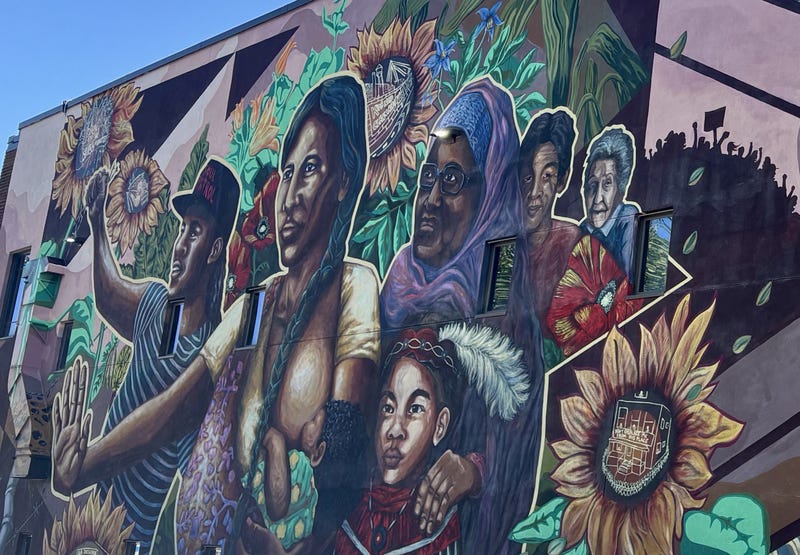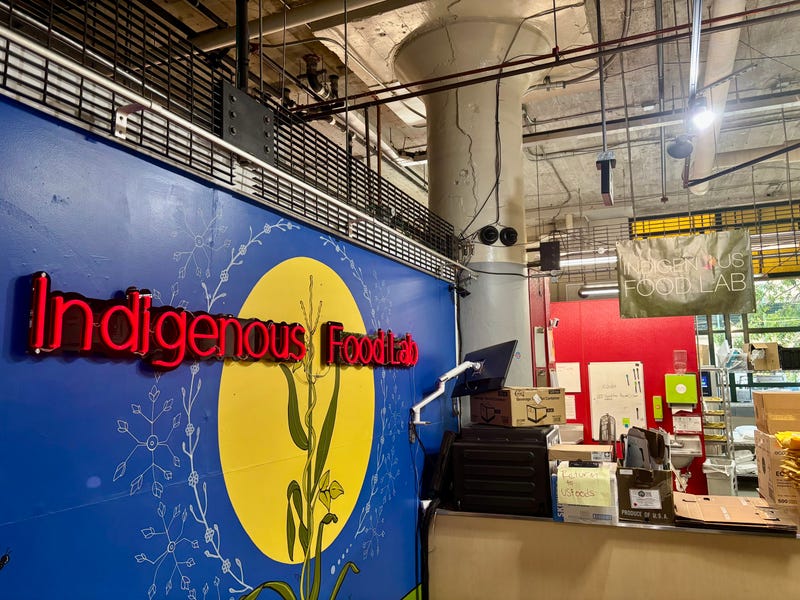While most born and bred Minnesotans know a lot about their home state, many of us are not as well-informed about the contributions of the Native Americans who came before us.
WCCO's Laura Oakes has more in this month's A Closer Look.
Many of us have heard and read the land acknowledgements. We know about our Lieutenant Governor Peggy Flanagan and her Native American heritage. Or maybe you went to a high school where the mascot changed. Chances are you know our state's history is rich in Native culture. Even "Minnesota" itself is derived from the Dakota words for the Minnesota River, likely meaning "cloudy water" or "sky-tinted water."
But for most Minnesotans, that’s about the extent of it - meaning we're likely missing out on some of the rich and significant Native American cultural and artistic contributions that color our state.
One of those traditions is a sunrise ceremony on Indigenous Peoples' Day at Lake Bde Mka Ska in South Minneapolis.
"The turnout today was really good," said an organizer. "I don't know how many are here, but it's growing every year, and it's good that we start in this beautiful way. And that everyone here has a lot of good things on their heart and minds."
Meanwhile, four and a half miles away.....
Al Gross is leading a tour group along Franklin Avenue East, dwarfed by a 4,000 square foot mural exploding with color and depicting Native history and values. It’s part of the Franklin Avenue Cultural Corridor brimming with art.
"Art has always been integrated in our culture and how we adorn our everyday things, and that's kind of passed on to contemporary day," says Alex Buffalohead with the Native American Community Development Institute, working to facilitate things like grants and networking opportunities for Native artists. "I would say due to the relocation era in the 1950s and the American Indian Movement, art and the messaging that comes with artwork and movement work have just kind of gone hand in hand. And so in a way there's levels of sharing our culture from generation to generation through grassroots organizations that protect our water, our land, our people, our culture, our languages. It's just really ingrained and intertwined in all that we do."

Down the street, the recently-renovated Minneapolis American Indian Center is the jewel of Franklin Avenue. It's where urban Native Americans are reconnecting to their ancestral traditions. That includes learning their original languages, which has seen an explosion in interest over the past couple of decades.
"Language alone is important, but you can't have our ceremonies and our ways without our language," explains 20-year old Hopa Stevens, a Dakota language instructor.
"For me, our ways have really impacted my life. Like having faith and having our ceremonies to turn to instead of a lot of other things that are in our community, like drugs and alcohol. That's something that has been a big thing for me," she continued.
Those ways Hopa talks about include ceremony, honoring the land, and a profound connection to the natural world.
How the land shaped the culture
That connection has shaped Cheryl Secola's life too.
"I grew up in northern Minnesota," says Secola. "My playground was the woods. As a little girl, 5-years old, I was out in the woods all day playing, and I remember making toys out of nature. Putting little pine cones on leaves and then having them go down the stream, pretending that was my family floating on a raft. That was my world, the land was my world and I was ok. And I was safe. My mom was fine with us being outside playing all day and then coming in to eat or whatever. And when I moved down here in 1986 I cried. I was like, - What do I do? Where's the woods?"
"On the opposite side, you know, I grew up here, born and raised in the city," adds Hopa Stevens. "I think here it is harder to have that connection. I had the privilege of being able to go back to my (reservation) with my mom and build that connection and see the value in it. But a lot of our our kids, our people here, never leave the city. Maybe they'll go up north to their Res. But I think here it is a lot harder to have that connection, and that also plays into the absence of the language and the ceremonies."
Truly understanding the history of our Native community is of course a much larger and more complex story... one that involves abuse, exile, hangings, and boarding schools.
But it also is a story of resilience, perseverance and even patience with those of us who were never taught the whole story when we were in school. And that - says Stevens - is up to us to educate ourselves on.
"It's not on us to teach other people," Stevens explains. "At the U, they make you take an American Indian studies class now which I think is really cool. But I took that class, that entry-level class, and some people still think we live in teepees."
In fact, Dr. Twyla Baker of the Mandan-Hidatsa Tribe actually coined the phrase “translation exhaustion” to describe what some Native Americans experience when they feel pressure to teach everyone else about their history.
That's something that Stevens can relate to.
"I've gone to schools out in Richfield when I was little, and I'm young, like 8 years old, and they're expecting me to educate my class," she explained. "So it's things like that, where it's that very common experience of being the only Native in the room, and being expected to educate these people when it's not our job."

Native American food is a gateway to the culture
One of the most familiar entryways into appreciating Native American culture is through food - it is almost a language unto itself.
Minneapolis has the good fortune to be home to the nationally-renowned Indigenous restaurant Owamni on the banks of Mississippi River, and soon to move to the Guthrie Theater.
Chef Sean Sherman brought it to life in 2021, and won the prestigious James Beard Award for Best New Restaurant in the country just a year later.
That passion has extended to a new cookbook and his non-profit organization NATIFS, or North American Traditional Indigenous Food Systems, which runs a food lab inside south Minneapolis' Midtown Global Market.
Ismael Popoca is in charge of product development and procurement.
"The way I would define Indigenous foods is food made with ingredients that were here before the colonizers came," says Popoca. "So it's what some people call pre-colonial food. We don't have any chicken, any pork, any beef, any cane sugar, but we do have turkey, we do have all kinds of nuts, chilies, corn, vanilla, avocado, tomatoes. A lot of ingredients that are regional to this continent and to North America, more specifically."
"I've been doing a lot of reading and one thing I'm so impressed within the Native American culture and maybe Mexican too, is the connection to the natural world and to the land. And you honor the plants and the animals and everything as one world," WCCO's Laura Oakes describes. "Is that just something that's unique to these cultures or is there something all of us can learn from this?"
"I feel like human nature has a tendency to connect with their surroundings and I think the Native American culture does it really well, when they call the trees their ancestors, their elders, the rivers, for them they see in the river a living being, not just, a commodity," Popoca answers. "You know, it has a name, it has a purpose. It has a reason to exist. I saw that also in Mexican culture, through their religion, through their beliefs - there is the god of the harvest, there is the god of the water, and it's not an image, it's just what it is. There is the god of rain. It's not just an image. When you see rain, there is a god happening. There is a god doing their thing, and so I think there is a connection. A well-documented connection between ancient civilizations and their surroundings, and how they help each other. And how they work with each other."
